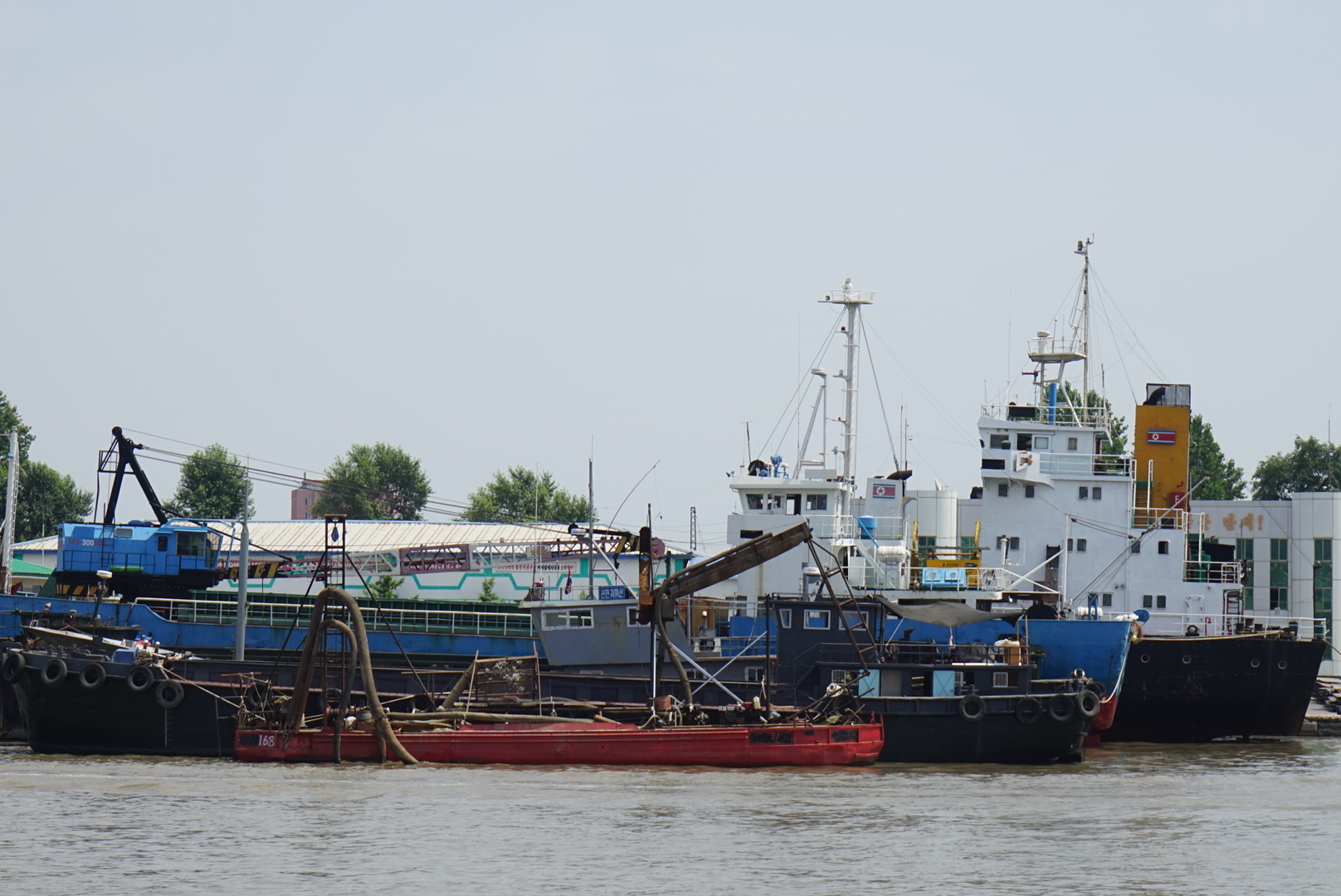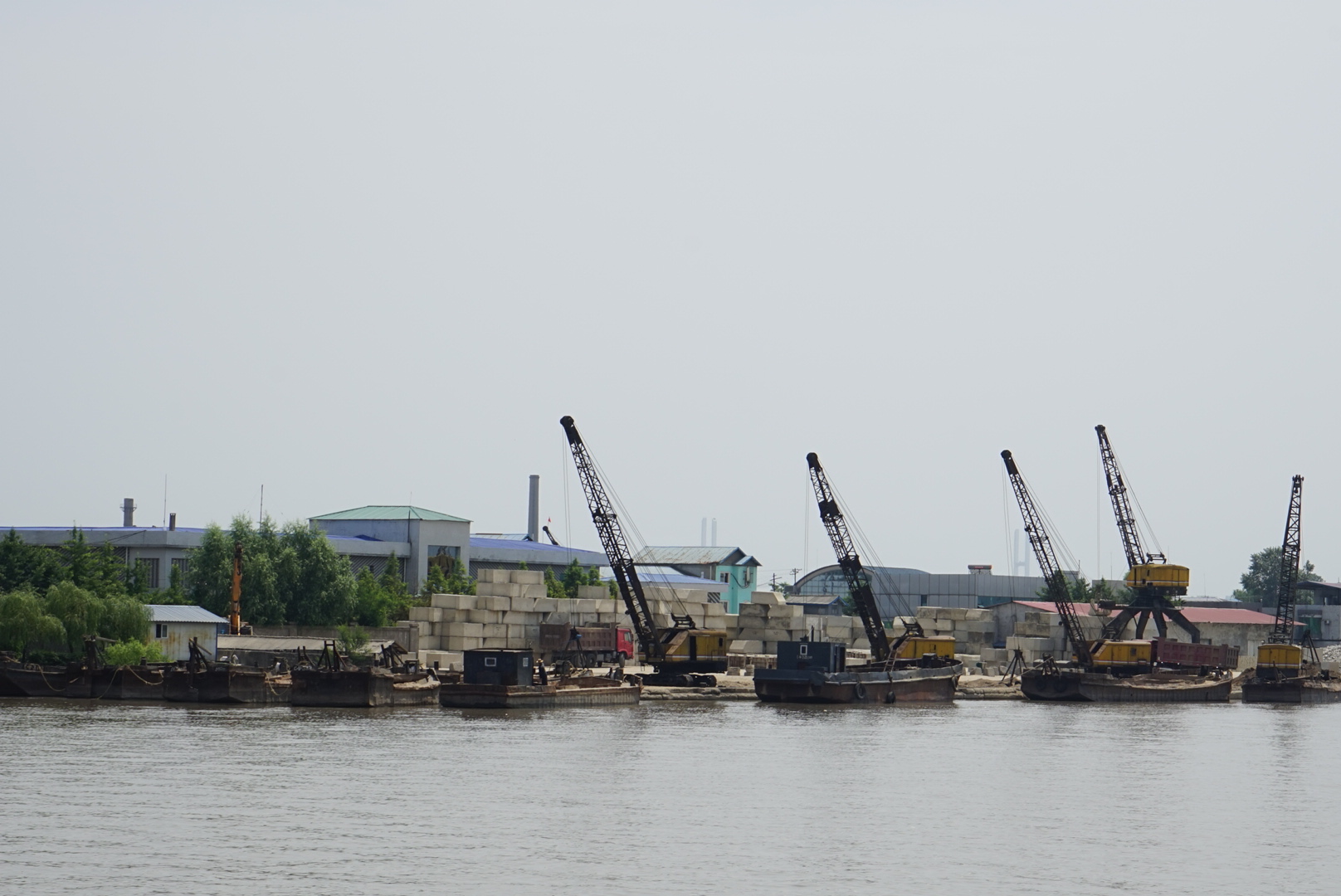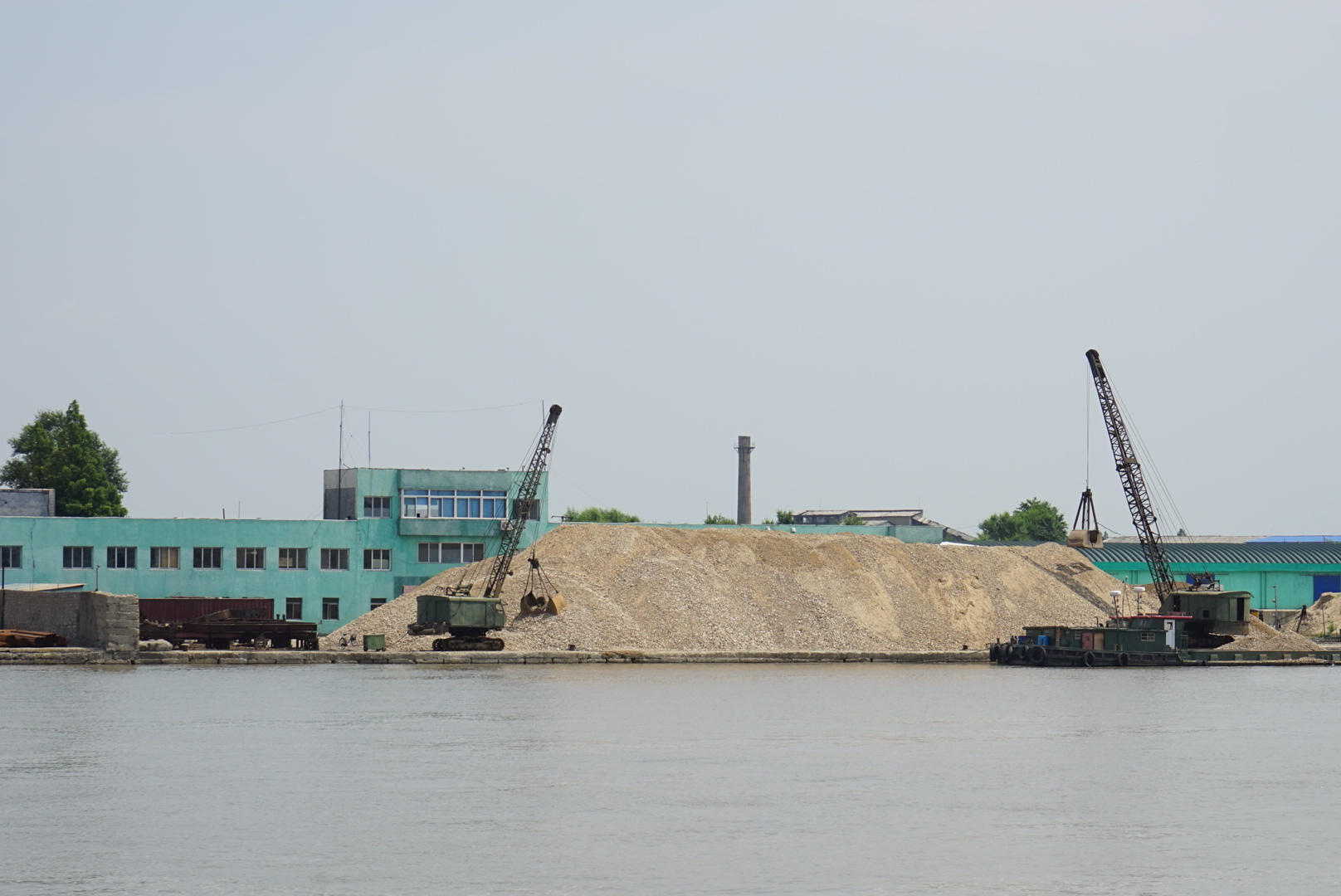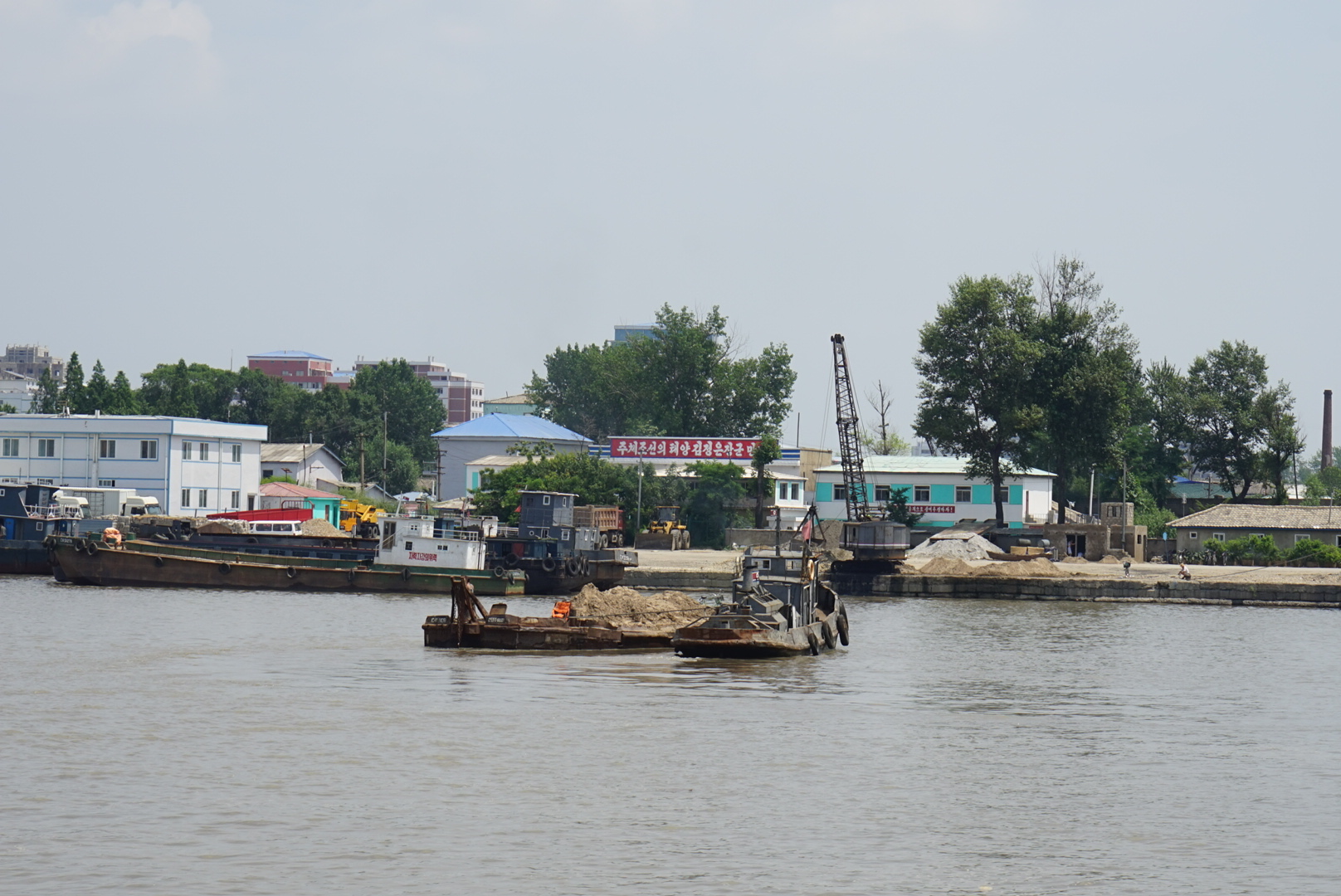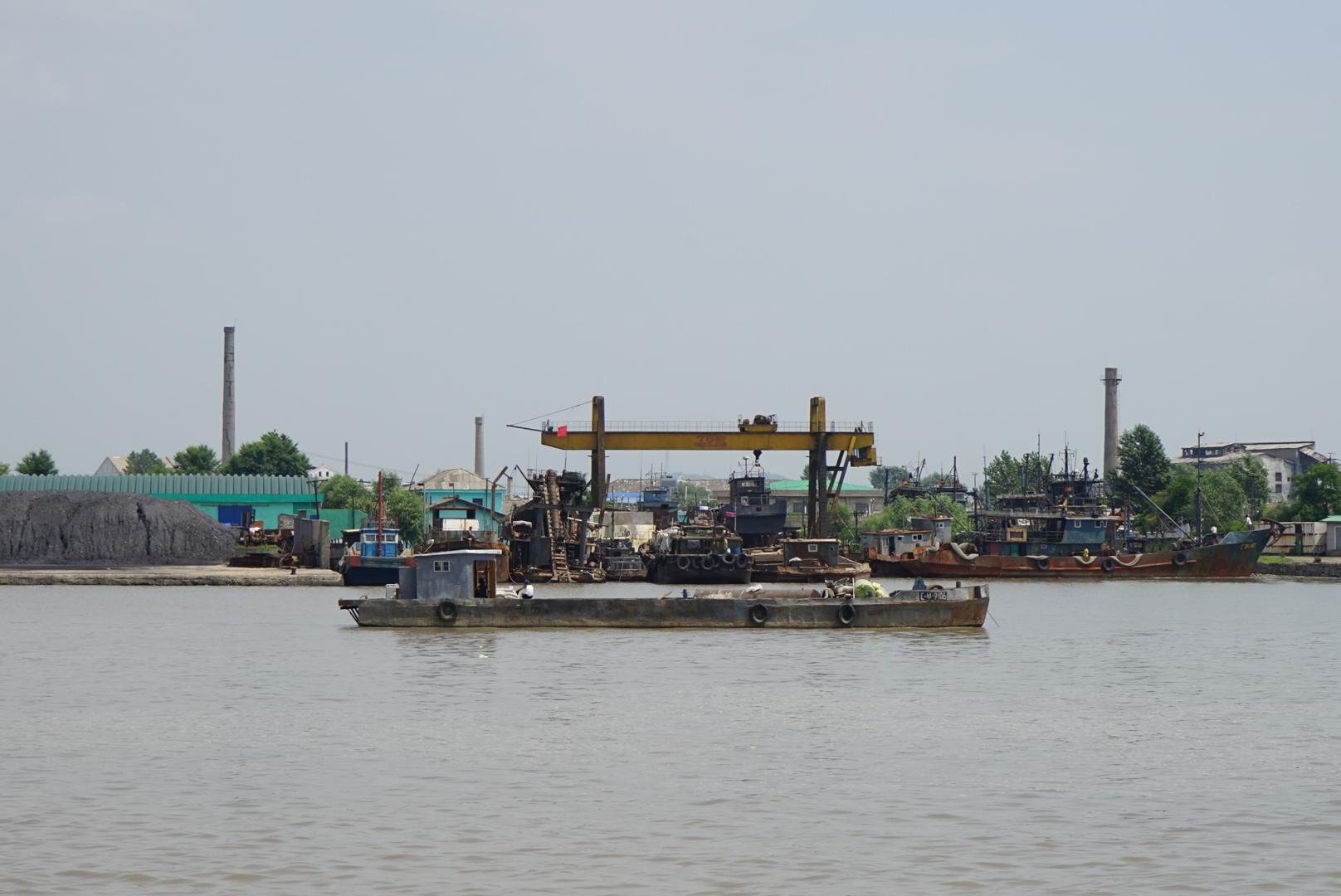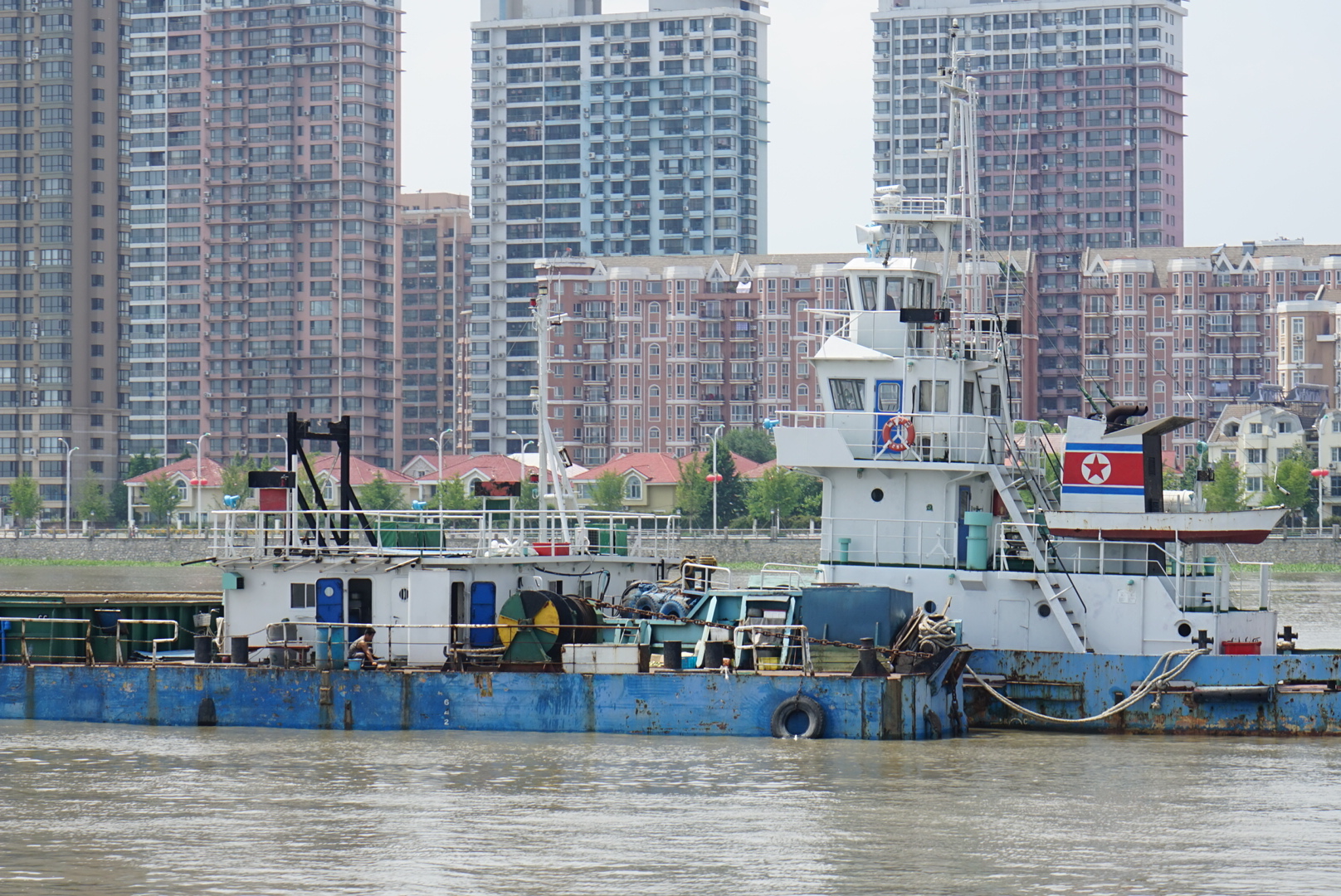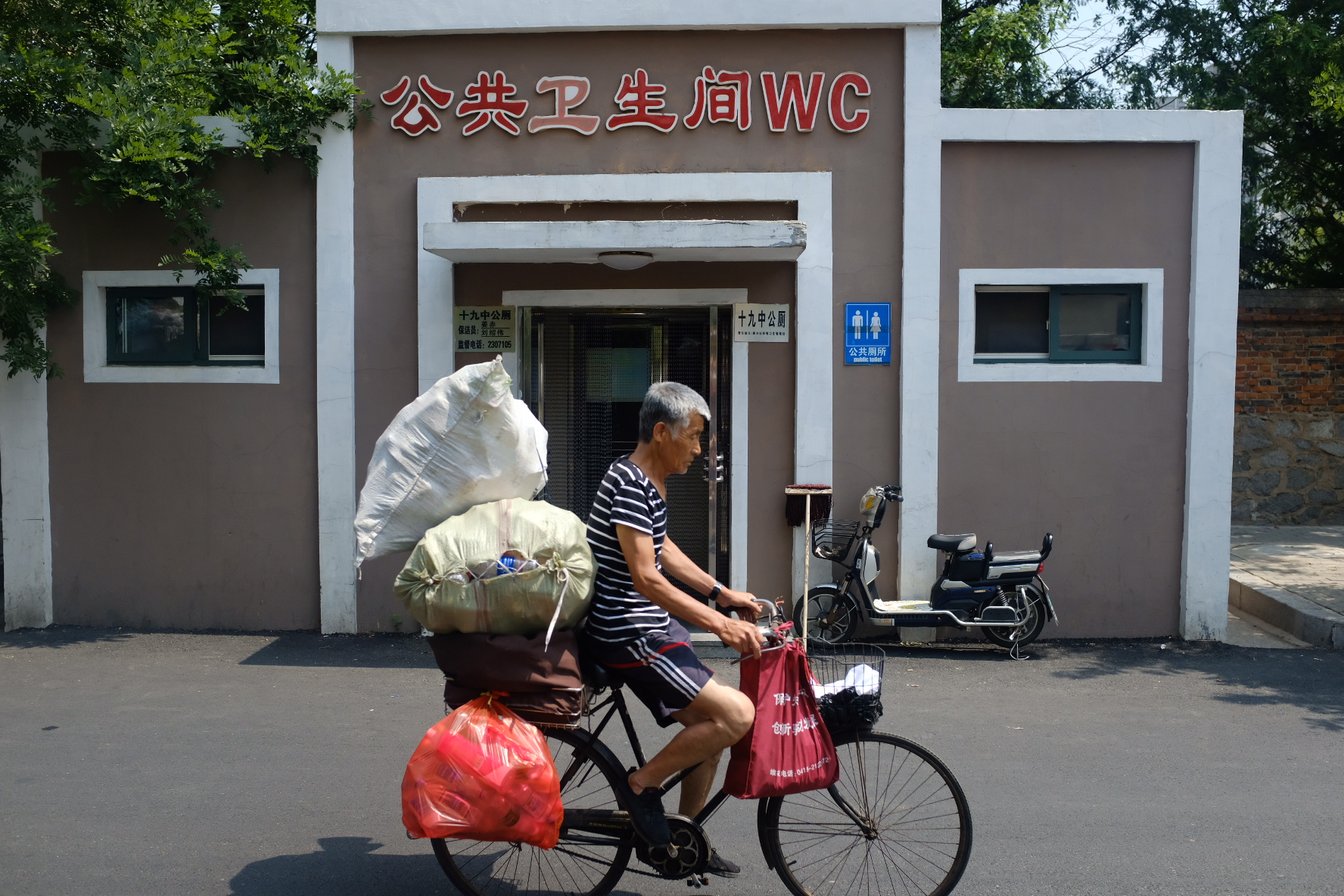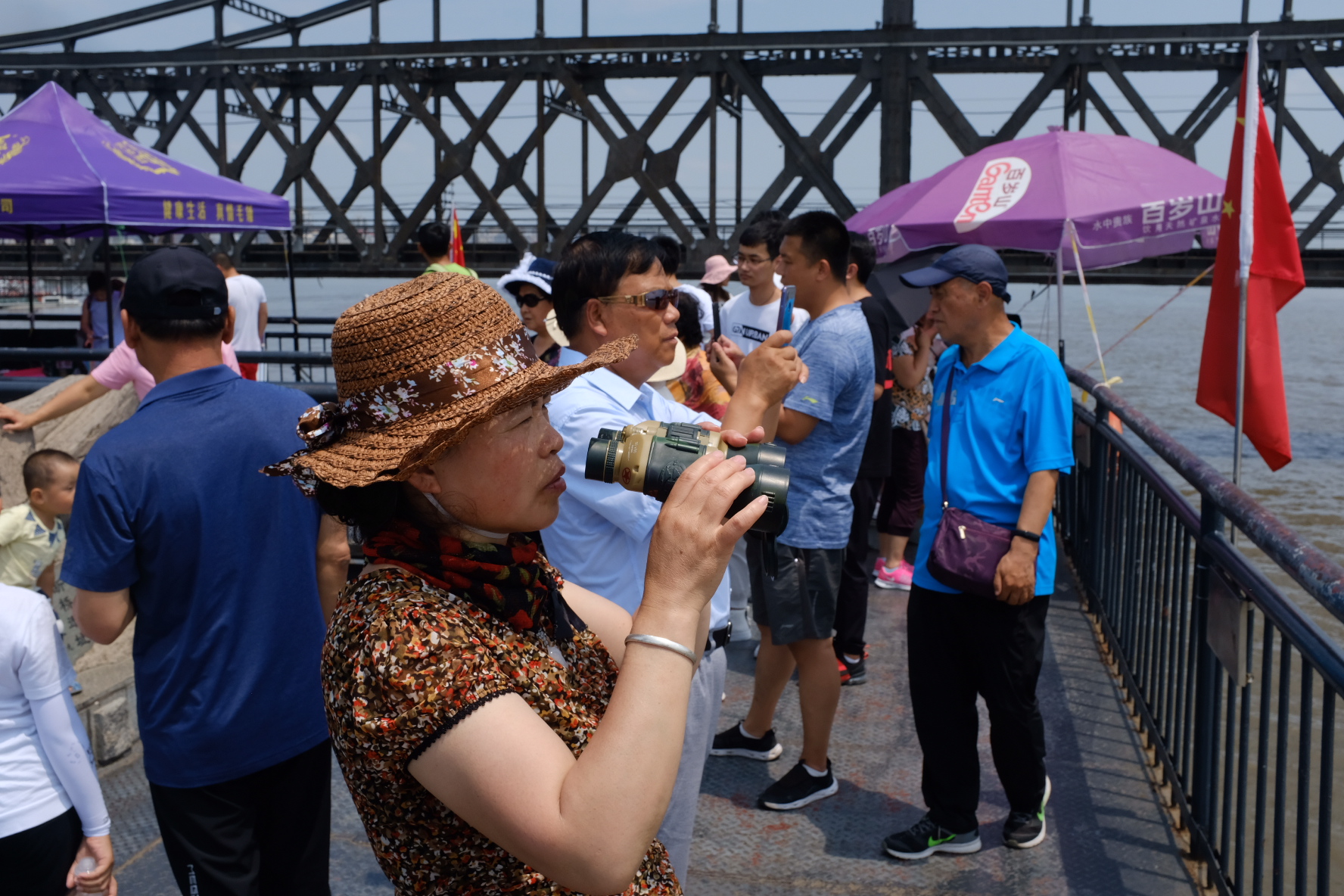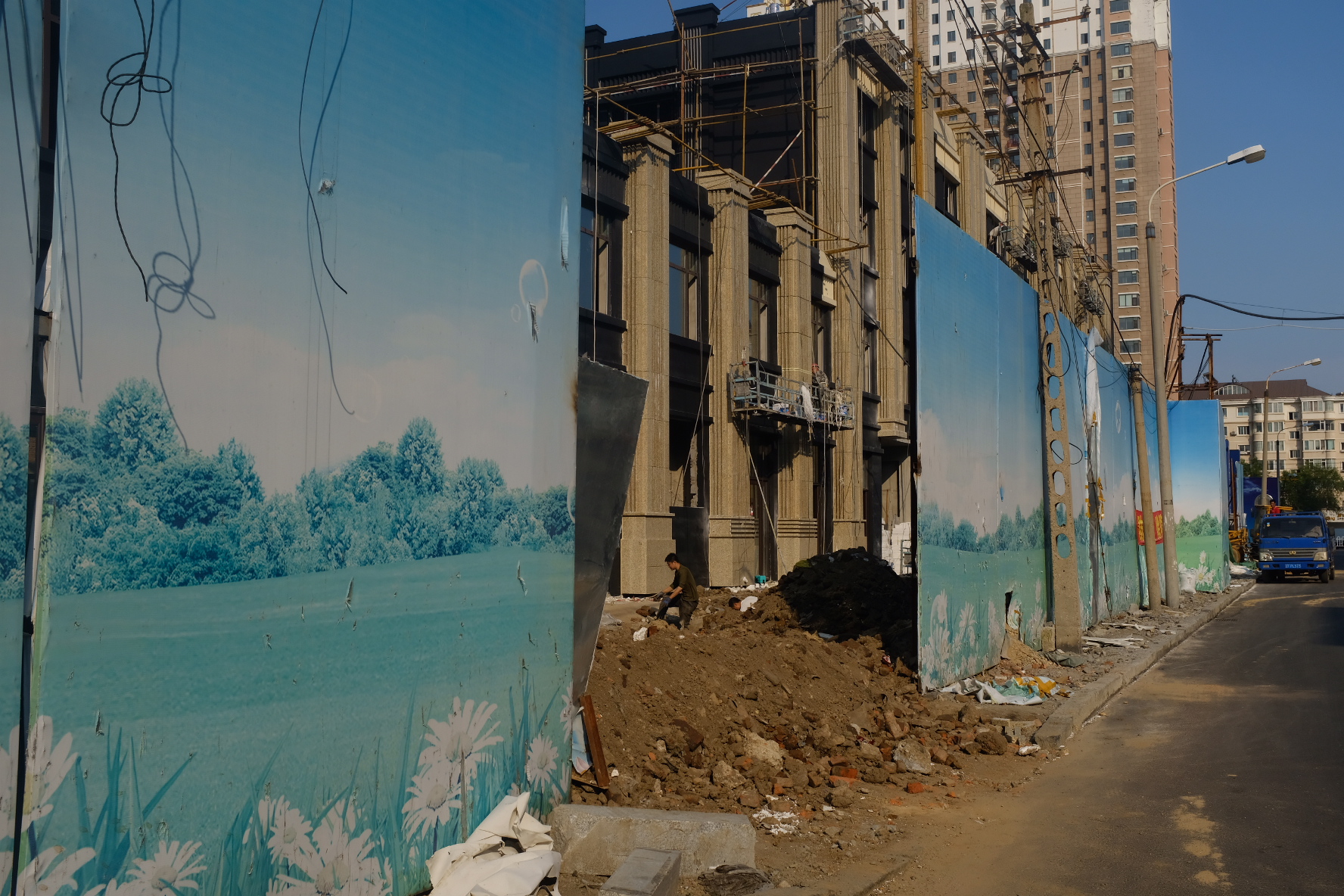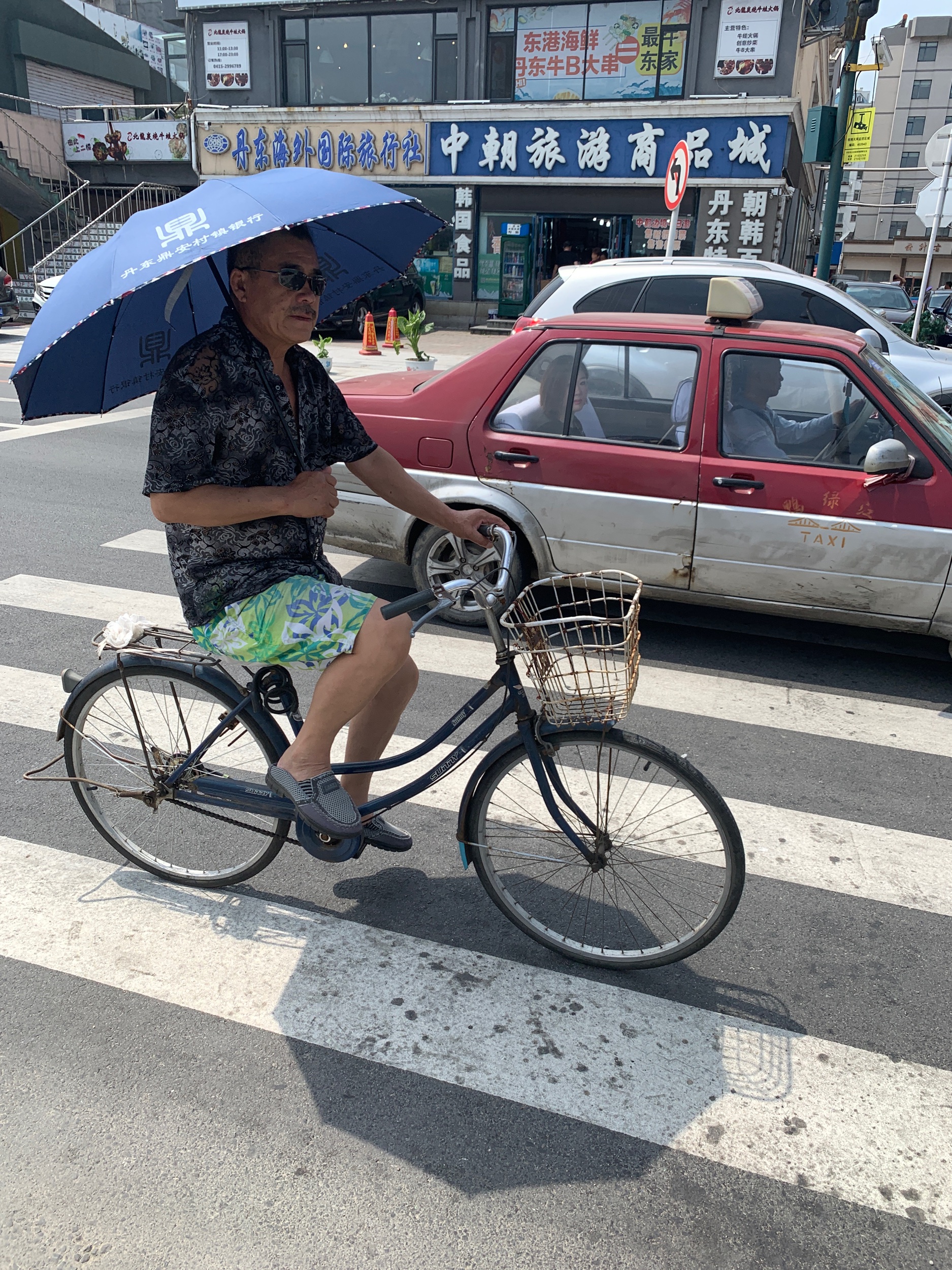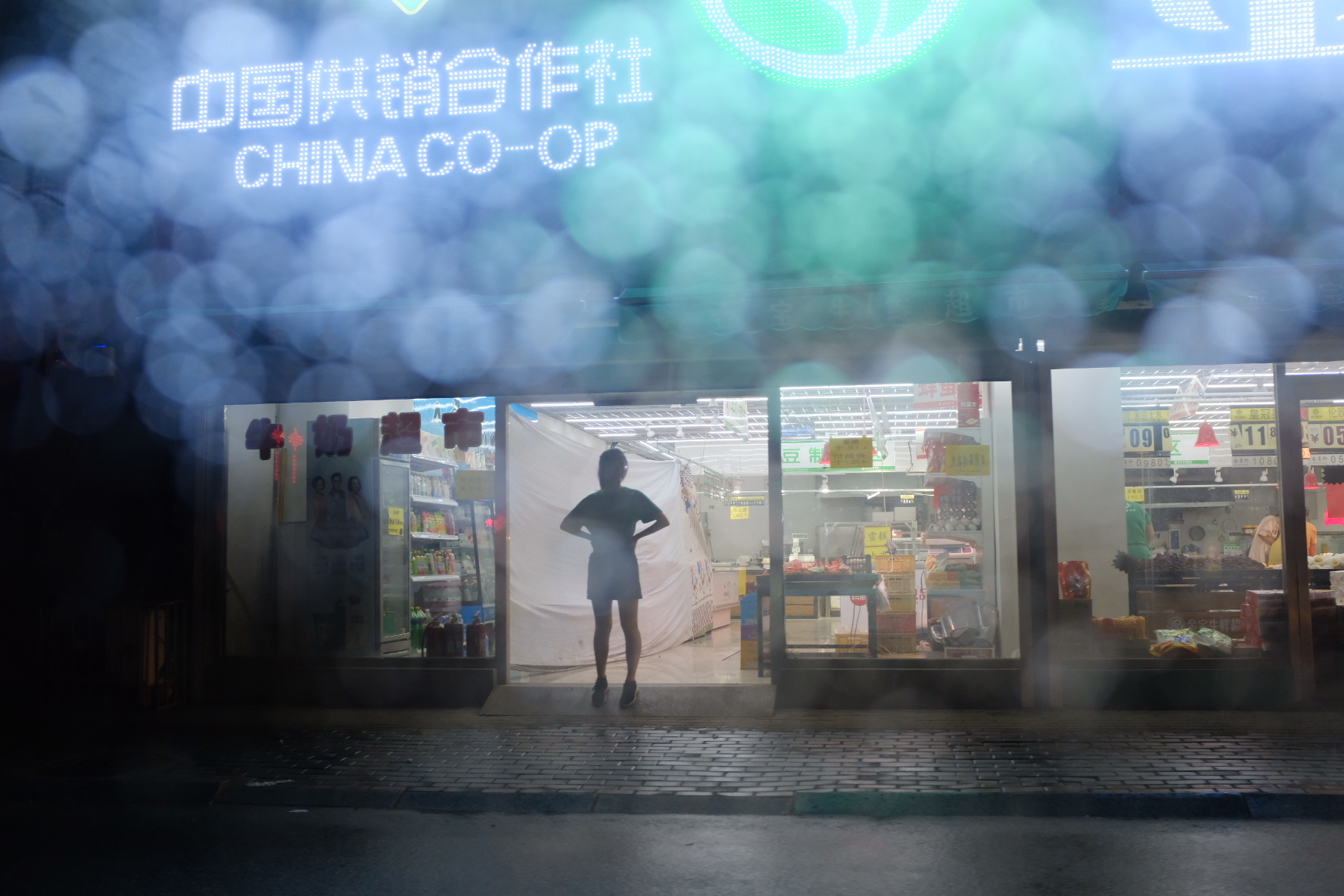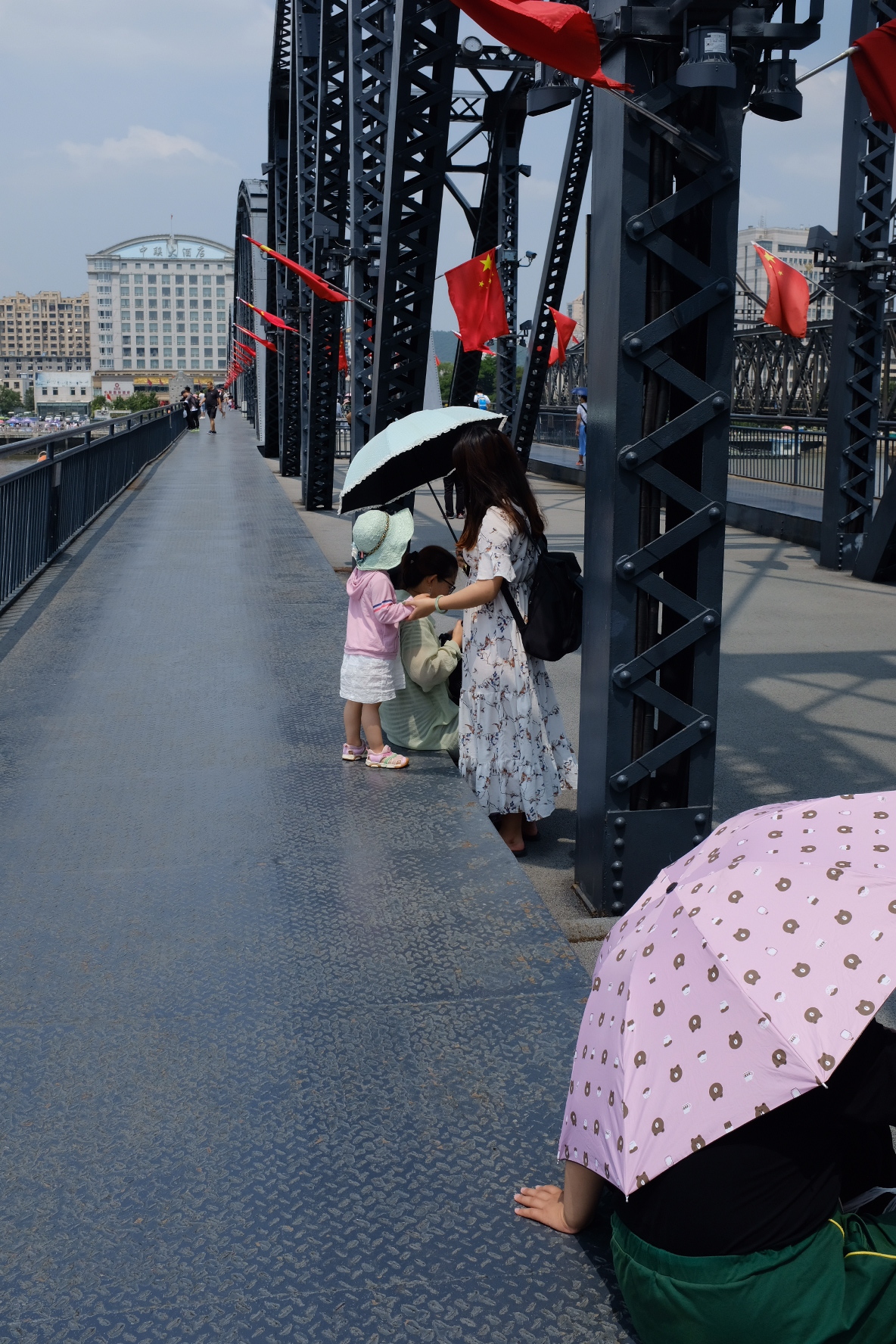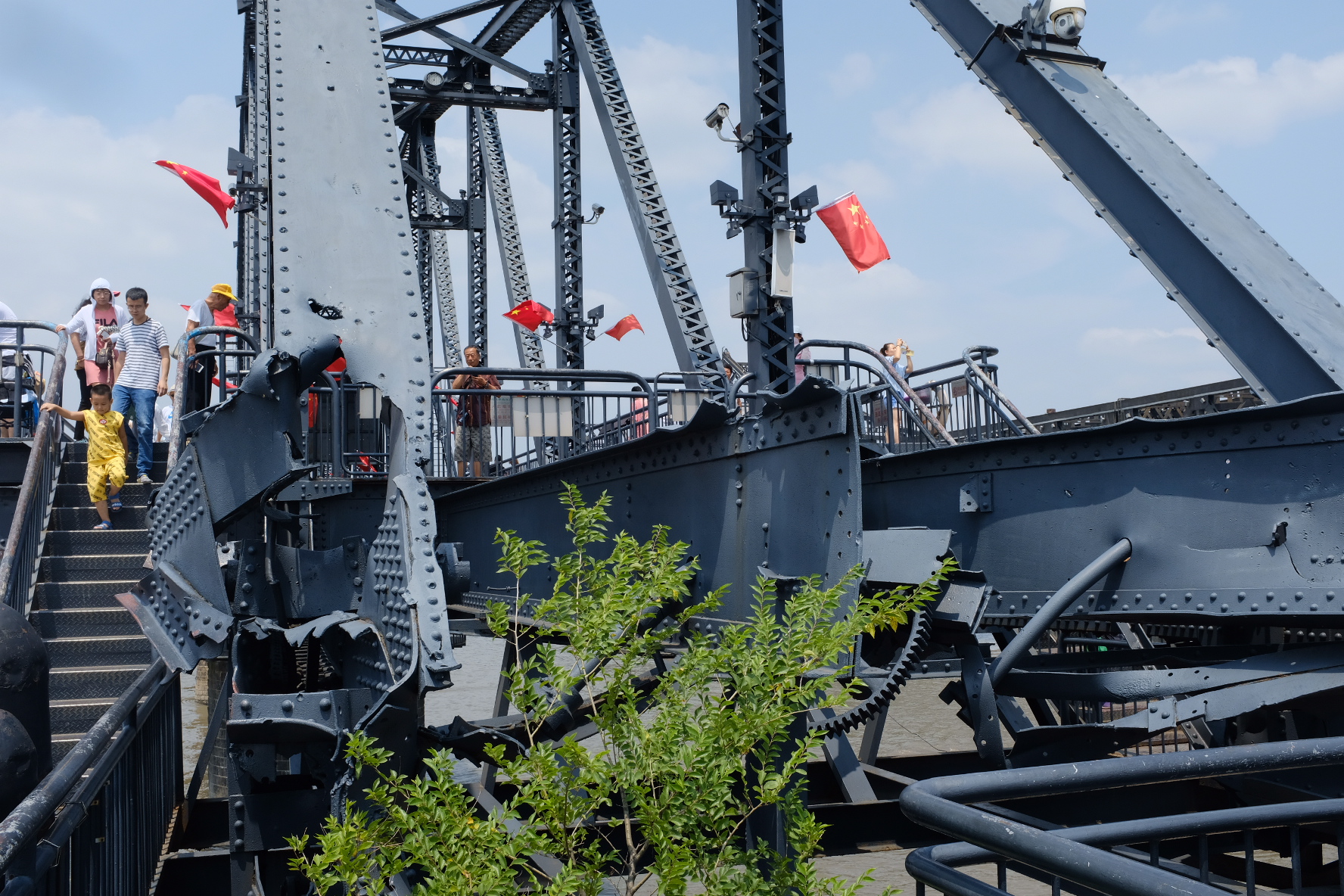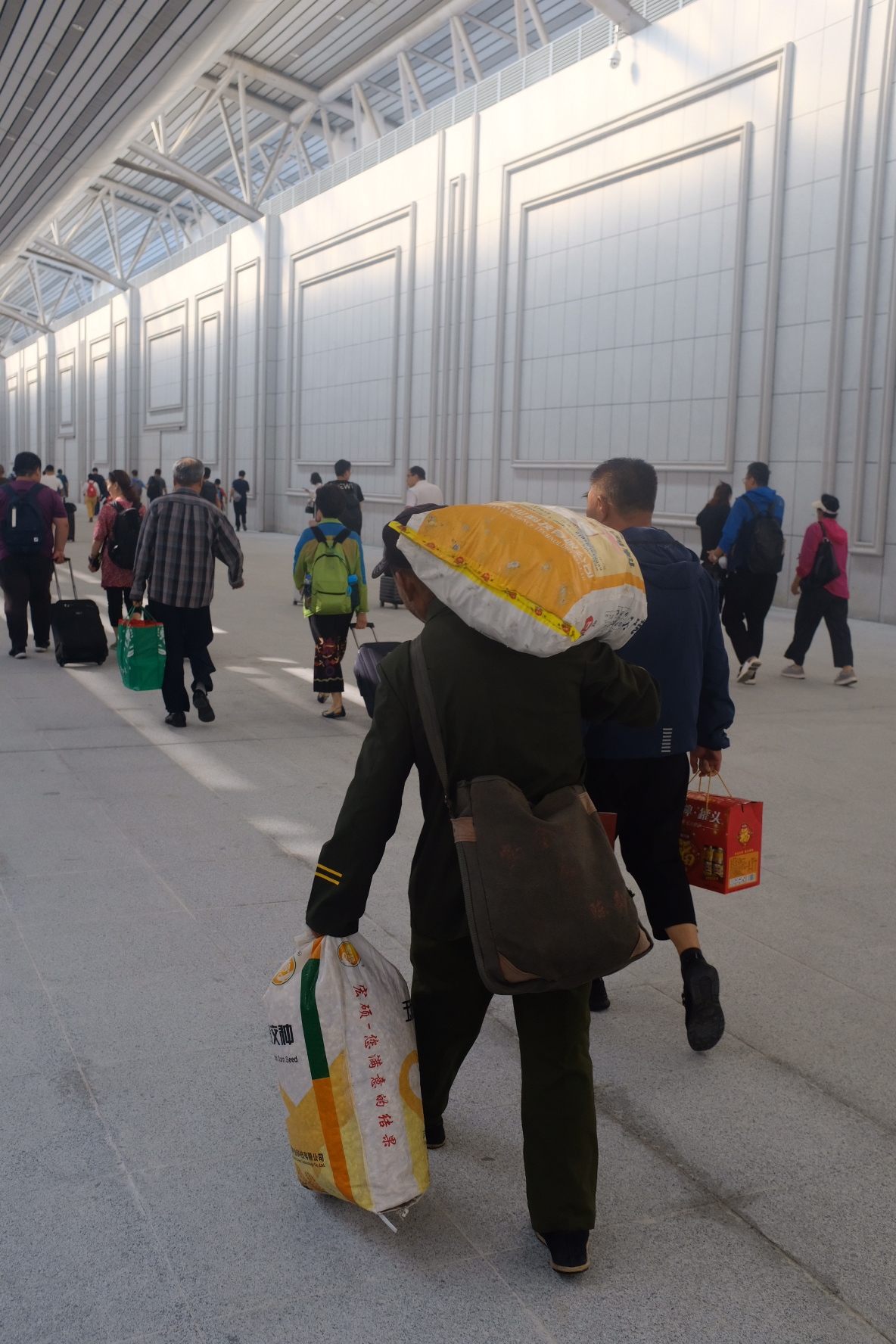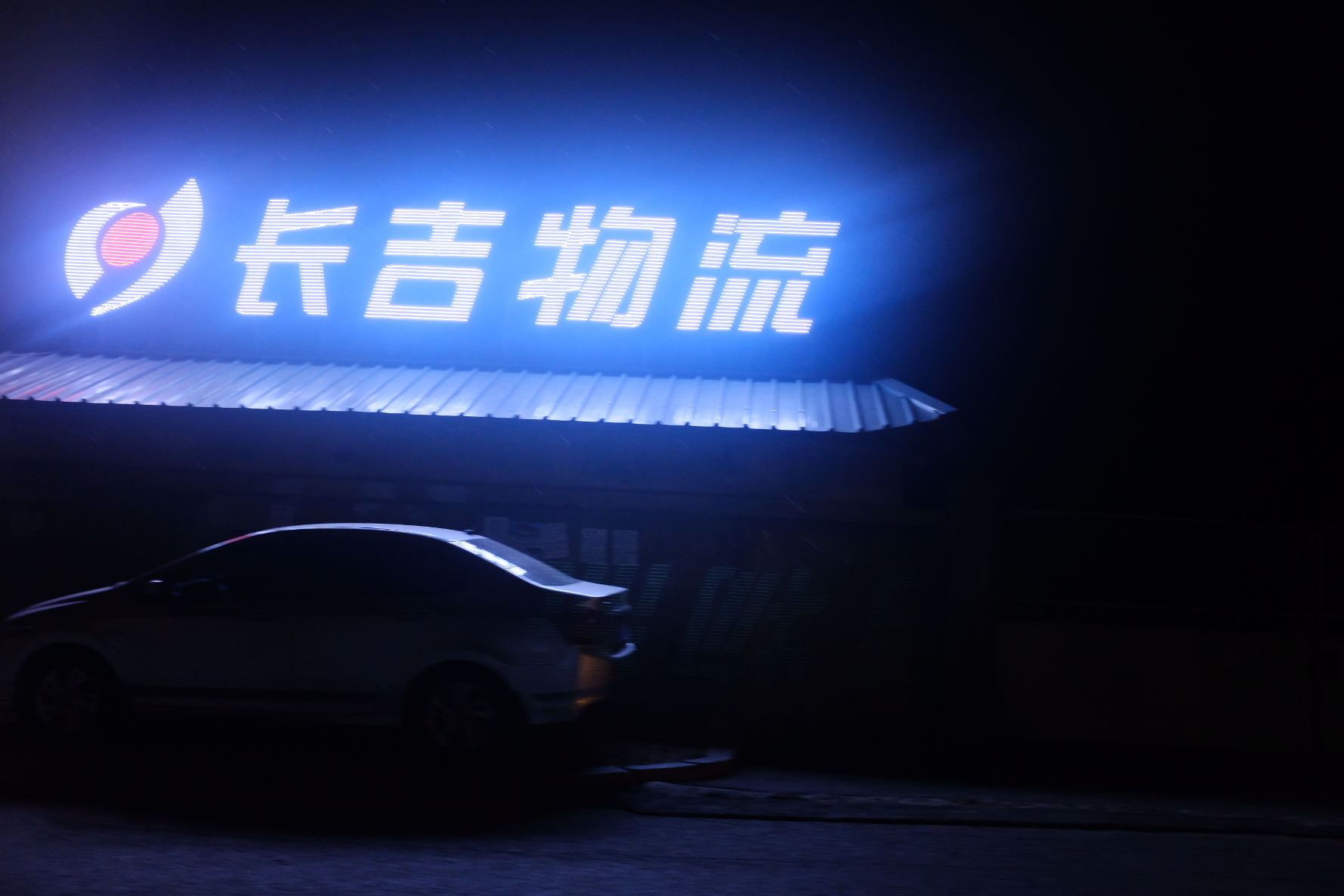“Is that a water slide?” Squinting through the large binoculars we paid $1.50 to peer across the Yalu river, I try to focus on two young boys on top of a slide inside what looks like a North Korean water park.
It´s our second morning in Dandong and we have a few hours to kill before we go to a rural village with our taxi driver from yesterday. We are standing at the end of the ¨Broken bridge” which used to connect the North Korean and Chinese cities, but now stands as a monument and tourist destination. A part of me has felt like the boat rides and binoculars are zoo-esque, observing some foreign creatures behind protective glass. But at least for me and Eddie, it´s not malicious or cruel, but based on fascination and empathy.
Chinese tourist pose at the end of the “Broken Bridge”
¨Do see the two boys? There they go!¨ I tell Eddie excitedly. Sure enough two seconds later a splash jumps over the edge of the water slide. Looming darkly behind the slide, a monolithic, circular building was under construction. While I did get an Eye of Sauroman vibe, I couldn´t help but smile at the thought of these kids, just being kids, enjoying the heat by splashing about in on a water slide.
Eye of Sauroman water park
The broken bridge runs parallel with the working bridge, which carries ~3 trains per day between the two countries. The bridge has a plain, industrial design with no flash or special appeal, but represents the main road to the outside world for North Koreans. The border between north and South Korea is a no mans land that is hostile and foreboarding. I wouldn’t go there lightly. I’m sure Eddie would love to go, and I would go with him. Conversely, the Yalu river is available for use by both countries freely. We see an old, cyber-punk looking boat blowing smoke pass by. It was operated operated by deeply tanned North Korean men. They look at us, we look at them. What are they thinking? How did they feel when they got up this morning?
We leave the bridge and head down for our second boat ride in 24hrs to get a closer look at the city we saw in the binoculars. Some Chinese women are fascinated by me and ask for photos (Eddie excluded) while we wait for the boat to fill up. Once people start complaining about waiting, the boat starts up and trolls near the North Korean shore. We see guards inspecting ambiguous sacks of cargo while men in ragged clothes cautiously look on nearby. Another guard stands in front of a wes’anderson aesthetic building. She leans against the building, a stoic figure, planted for as long as we are within sight.
Rows of boats sit idle nearby. It´s hard to differentiate the abandonded and the operational ones, only given away by the small figures who pop their heads out or walk around the hull. I see an excavator pick up some sand, turn 90 degrees, and drop the pile of sand. I cant get the thoughts out of my head: how much of this is just for show since the NK governemnt knows Chinese and other tourists are coming by these shores daily. Eddie assures me it´s not propoganda. What are they doing with that sand?
I’m curious what the words painted in large characters on the cranes and buildings mean.
“Long live the sun the son of Korea, Marshal Kim Jung-Un” Eddie tells me. We see it again plastered across buildings, some with the paint fading away. As the boat turns to the Chinese shore and face the imposing rows of Super Blocks and industrial buildings, I take one last look to see if the woman guard is still gargoyle´d against the pink pastel building. She is. I wonder what she thinks of us? Nothing at all?
With about an hour left before we leave for the village, we only feel it’s right for another North Korean meal. Eddie spots the place by a group of waitresses cleaning the street.
Street cleaners
We head in and are greeted by a similar scene as what we saw the night before: a mostly empty room with state TV playing, a manager of sorts, and lots of young, pretty, quarantined, North Korean waitresses.
The food was just as satisfying as before, this time we go for North Korean beer which tastes just as I expect: the same as Chinese. I see a chance for a photo, which Eddie tells me was definitely “pushing the envelope”, a theme for the trip. The manager - donning a North Korean pin and puffing cigarettes constantly - dips in and out of the room, but seems to pay us no mind. As we are getting ready to go, a group of South Korean tourists arrive, which seem even more bewildered than us. I peer at my watch; “time to roll”. The rural village awaits.





